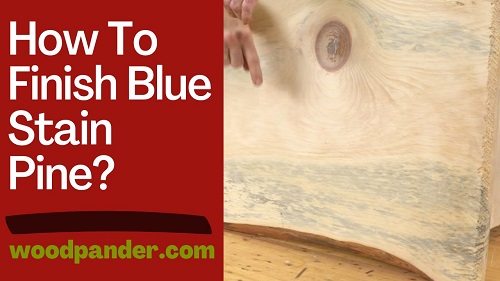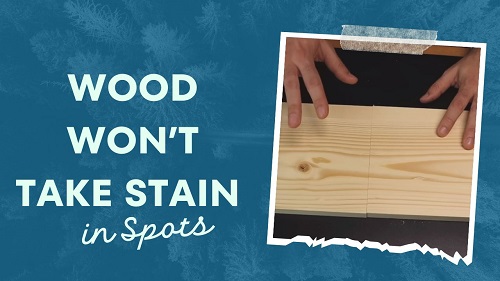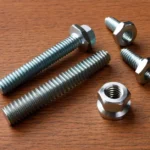You have tried refurbishing your old furniture with your Shellac. But, it’s not sealing your wood properly. This is what happens when your shellac doesn’t keep up its natural consistency. That’s when you should thin your shellac.
So, how to thin shellac?
Alcohol is the key ingredient to thin shellac. Methanol and ethanol are the two major alcohols that can diffuse and thin shellac. Methanol is a hazardous substance since it is toxic. Pure ethanol is another option to thin and clean shellac. But denatured alcohol at 95% could be the best solvent for thinning your shellac flakes.
This is only just some hints to thin shellac. We’ve provided you with a complete step-by-step process to thin shellac.
So, if you want to know, let’s get started.
One of our articles –What Finish To Use For Wooden Coasters: An Easy Guide
Why Do I Need To Thin Shellac?

Shellac is a resinous substance that’s obtained as dry flakes. This substance is used to seal the gaps in the woods. It is also used to add evenness or intensify the beauty of the wood. Shellac has properties to seal out the moisture and possess strong insulation qualities.
Now, thinned Shellac works as an outstanding stain barrier coat. It especially works on softwoods and problematic or end grain before staining out.
The reason for thinning the shellac is to help it penetrate the gap between the bands. Moreover, it‘s easy to brush, spray, wipe, pad and even dip when the shellac is thin.
Can You Thin Shellac with Acetone?

Before attempting to thin shellac with acetone, it’s necessary to understand the risks involved. While acetone can dissolve shellac, it’s not the recommended thinner due to its sensitive nature. Shellac is a natural product that requires careful handling to preserve its integrity.
The Risks of Using Acetone
Against using acetone to thin shellac is the fact that it can cause the finish to become brittle or gummy if used in excess. Additionally, acetone can remove some of the protective properties of the finish, making it less effective.
Alternative Methods to Consider
Beside using acetone, there are other methods to thin shellac that are safer and more effective. These include using denatured alcohol, shellac thinner, or heat to achieve the desired consistency.
Shellac can be thinned using alternative methods that are gentler on the finish. For instance, denatured alcohol can be used to thin shellac, although it may reduce the durability of the finish. Shellac thinner, on the other hand, is a specially formulated solvent that can dissolve shellac without compromising its integrity.
Heat can also be used to soften shellac, making it more pliable and easier to work with. By exploring these alternative methods, you can achieve the desired consistency for your project while preserving the quality of the finish.
13 Effective Methods on How to Thin Shellac
By now you know why you need to thin shellac. In the following, you’ll know what important elements you need to thin your shellac.
Thinning Shellac concerns quite a few steps. So, let’s jump into those-
Method 1: Thin with Rubbing Alcohol
Shellac can be thinned and cleaned by Rubbing Alcohol. But, Rubbing alcohol like Isopropyl contains 30% water in its solution. So there’s a chance that water can produce a cloudy residue in the shellac. This will spoil a shellac finish.
The water might turn the shellac to white or blush. Try to have your hand on 95% – 100% Pure Propanol or Isopropyl alcohol. With this, Thinning Shellac will be so easy to do.
So, to have a solution of pure alcohol, mix the rubbing alcohol with shellac flakes.
Method 2: Thin with Denatured Alcohol
Denatured alcohol is the best thinner and clear-up solution for shellac. Denatured Alcohol or Methylated spirit is formed with ethanol and specific additives.
This alcohol works as a cleaning agent, sanding aid, and exterminator as a solvent. As for the shellac, it has the quality of cleaning substances and gives it a form. Plus it is 30% more effective than other alcohol solvents. For this reason, we use this alcohol to thin and clean shellac.
best alcohol options for dissolving shellac flakes
| Alcohol Brand | Purity Level | Evaporation Rate | Shellac Dissolving Time | Availability | Price |
| Everclear Grain Alcohol | 95% or higher | Fast | Quick (within a few hours) | Widely available in liquor stores | Moderate |
| Denatured Alcohol | Typically 90-95% | Moderate | Moderate (within a few hours) | Available in hardware stores | Affordable |
| Isopropyl Alcohol (Rubbing Alcohol) | 70% or higher | Slow to Moderate | Slow (may take a day or more) | Widely available in drugstores | Affordable |
| Methanol | Typically 99% | Very Fast | Quick (within minutes) | Available in specialized stores | Moderate |
| Shellac Thinner | Varies with brand | Varies with brand | Varies with brand | Specialty woodworking stores | Varies with brand |
Alternative to denatured alcohol
Looking for an alternative to denatured alcohol? No worries, we’ve got you covered! When it comes to finding a safe and effective substitute, there are several options you can consider that won’t leave you feeling lost in the wilderness.
Isopropyl Alcohol: Commonly known as rubbing alcohol, isopropyl alcohol can be an excellent alternative to denatured alcohol. It’s readily available in most drugstores and has a variety of uses, from disinfecting surfaces to cleaning electronics.
Ethanol: Pure ethanol or ethyl alcohol can serve as a suitable replacement for denatured alcohol in many cases. While it may not be as cheap as denatured alcohol, it is relatively easy to find in specialized stores or online.
Acetone: Often used in nail polish removers, acetone can be another alternative to denatured alcohol. It is a potent solvent and can effectively dissolve various substances, making it useful for cleaning and degreasing.
Vinegar: Yes, the humble vinegar found in most kitchens can also come to the rescue! White vinegar, especially, is a natural and non-toxic option that works well for cleaning glass and certain surfaces.
Citrus-based Cleaners: Look for cleaners that use citrus extracts as their main ingredient. These eco-friendly alternatives are biodegradable and can tackle various cleaning tasks without the harshness of denatured alcohol.
Hydrogen Peroxide: This household staple has excellent disinfecting properties and can be used as a substitute for denatured alcohol in certain cleaning tasks.
DIY Solutions: You can also create your own alcohol-free cleaner by mixing water, mild dish soap, and a few drops of essential oil for a pleasant scent. This homemade alternative is safe for most surfaces and won’t harm the environment.
Remember, when trying a new cleaning solution or solvent, always conduct a small patch test on a hidden area of the surface to ensure compatibility and avoid any unwanted damage.
Method 3: Thin with Methanol
Wondering how to thin shellac without denatured alcohol?
Well, methanol is quite effective for thinning shellac. However, if you are exposed to the vapours for an extended period, it is highly dangerous. So, unless you’re dealing with good exhaust, methanol isn’t a good idea.
You can use either one of these methods to make a cut. Preferably, massive people use Denatured Alcohol to thin shellac. But Methanol and Pure Isopropyl are good options too. So, just use the one that you can easily access.
Method 4: Use a Good Quality Brush
Below the surface of your project, a good quality brush will help ensure that your shellac is evenly applied and does not contain any bubbles.
Method 5: Use a Lint-Free Cloth
Cloth selection is key when applying shellac; use a lint-free cloth to avoid leaving any lint behind on the surface.
Thin coats of shellac are important to achieve the desired effect, so make sure to apply them evenly and let each coat dry completely before applying the next one.
Method 6: Use Shellac Thinner
About the thickness of your shellac, if it’s too thick, you can use a shellac thinner to achieve the desired consistency.
A shellac thinner is a specially formulated solution that dissolves shellac, and it’s available at most hardware stores.
Method 7: Use Denatured Alcohol
An alternative method to thin shellac is to use denatured alcohol, but be cautious as it can reduce the durability of the finish.
To thin shellac with denatured alcohol, combine one part denatured alcohol and three parts shellac in a container, and stir until it’s thoroughly blended.
Method 8: Use a Heat Gun
Above all, if your shellac has become too thick and is difficult to work with, you can use a heat gun to soften it slightly and make it more pliable.
Also, be careful not to overheat the shellac, as this can cause it to become too thin or even boil.
Method 9: Use Boiling Water
With boiling water, you can thin shellac by placing it in a container of boiling water for a few minutes until it reaches the desired consistency.
Lint Free cloths are important when applying shellac, so make sure to use one to avoid leaving any lint behind on the surface.
Method 10: Use a Hair Dryer
Along with using a heat gun, you can also use a hair dryer to slightly soften shellac that has become too thick and difficult to work with.
At the right distance, hold the hair dryer approximately 2-3 inches away from the surface and move it around in a circular motion to evenly heat up the shellac.
Method 11: Add Shellac Flakes
On the other hand, if you need to thin shellac quickly, you can add shellac flakes to the solution until it reaches the desired consistency.
Brush up on your skills by adding a small number of flakes and stirring until they are completely dissolved.
Method 12: Use Shellac Solvent
Finally, shellac solvent can also be used to thin shellac, but it’s important to note that this method should only be used as a last resort, as it can significantly reduce the durability of the finish.
Method 13: Use Shellac Solvent
Your last resort for thinning shellac should be using a shellac solvent. While it can be effective, it’s important to note that this method can significantly reduce the durability of the finish.
To use, add a few drops of shellac solvent to the can of shellac and stir until it reaches the desired consistency.
Be cautious not to add too much, as this can compromise the integrity of the finish. Stir the mixture thoroughly after each addition, and use with caution.
Step by Step Process to Thin Shellac
You can use either of the Rubbing Alcohol, Methanol, Denatured Alcohol to thin shellac. Any solvents work as an effective cut-off agent as long you follow the steps right.
Now, we’ll head you to the complete process of thinning your shellac-
Step 1: Dissolving and Mixing Flake Shellac
First, combine in a dark plastic or glass with a tight-fitting covering. If a clear container is used, keep it in a cool and dark place.
Immerse the flake shellac in roughly half of the total alcohol. Let it settle for 24 hours or longer (crush the button shellac to hasten to dissolve). Continue stirring from time to time until dissolved.
Step 2: Set the “Cut”
“Cut” determines the consistency of shellac. Three pounds of shellac flakes per gallon of Denatured Alcohol solvent equals a three-pound cut. You can use this ratio for other alcohol solvents as well.
If you are thinning shellac for the first time, start with a light consistency. This could be about a 1-1.5 pound cut.
Use a 2:16 ratio of shellac flakes to alcohol. This means 2 ounces of shellac flakes get dissolved in 16 ounces of alcohol. This is suitable for 1 pint of 1 pound cut liquid shellac.
Heavier liquid cuts can work for thinning shellac. But it is better to have several thin layers rather than a few thick ones.
1 lb cut shellac
A 1 lb cut shellac is a solution containing 1 pound of shellac flakes dissolved in 1 gallon of denatured alcohol, resulting in a lighter consistency compared to higher cut ratios.
2 lb cut shellac
A 2 lb cut shellac refers to a mixture of 2 pounds of shellac flakes dissolved in 1 gallon of denatured alcohol.
Step 3: Purify the Mixture
After the shellac has completely dissolved, filter it through a fine-mesh cheesecloth. This will remove any impurities from the shellac.
Then the liquid shellac should be thoroughly shaken or mixed before use. Let it set aside for 24 hours and that’s it.
After perfectly dissolving, we can get thinner shellac for our work!
Best shellac for wood
| Shellac Brand | Type | Color Options | Dry Time | Coverage | Sealant Properties | Food Safe |
|---|---|---|---|---|---|---|
| Zinsser Bulls Eye Shellac | Dewaxed Shellac | Clear, Amber, White | 30 minutes | 400-600 sq. ft. per gallon | Excellent sealing properties | Yes (after complete cure) |
| Behlen Solar-Lux | Dewaxed Shellac | Amber, Garnet | 30-60 minutes | 400-500 sq. ft. per gallon | Good sealing properties | Yes (after complete cure) |
| Liberon Shellac Flakes | Dewaxed Shellac | Blonde, Light, Medium, Dark | Varies with dilution | Depends on dilution | Good sealing properties | Yes (after complete cure) |
| General Finishes Seal-A-Cell | Waxy Shellac | Clear | 1 hour | 600-800 sq. ft. per gallon | Moderate sealing properties | No (not food safe) |
| Mohawk Finisher’s Glaze | Dewaxed Shellac | Clear | 30-60 minutes | 600 sq. ft. per gallon | Good sealing properties | Yes (after complete cure) |
Zinsser Shellac Instructions
Surface Preparation: Ensure the surface is clean, dry, and free from dust, grease, and contaminants. Sand the wood to a smooth finish if needed.
Mixing: Zinsser Shellac comes in a concentrated form as Shellac Flakes. To prepare the shellac solution, dissolve the flakes in denatured alcohol following the recommended ratio on the product label. Stir well until fully dissolved.
Application: Apply the shellac solution using a natural bristle brush, foam brush, or lint-free cloth. Work in smooth, even strokes, following the grain of the wood.
Drying Time: Shellac dries relatively quickly. Allow the first coat to dry for about 30 minutes to 1 hour before applying additional coats. Ensure good ventilation during the drying process.
Sanding (Optional): If desired, lightly sand the surface between coats with fine-grit sandpaper to achieve a smoother finish.
Number of Coats: Apply additional coats as needed to achieve the desired level of sheen and protection. Typically, 2-3 coats are sufficient for most applications.
Curing Time: Shellac continues to cure and harden over time. It’s best to avoid heavy use or exposure to moisture until it has fully cured.
Denatured Alcohol vs Isopropyl Alcohol for cleaning wood
| Aspect | Denatured Alcohol | Isopropyl Alcohol (Isopropanol) |
|---|---|---|
| Chemical Composition | Ethanol mixed with additives to deter consumption (usually methanol) | Isopropanol (single chemical compound) |
| Purity Level | Typically 90-95% pure alcohol | Varies (commonly 70% or 91%+) |
| Cleaning Power | Effective solvent for removing dirt, grease, and light stains | Decent cleaning ability, but less potent than denatured alcohol |
| Evaporation Rate | Rapid evaporation, leaves little residue | Evaporates relatively quickly, may leave some residue behind |
| Water Content | Minimal water content | Contains water (unless anhydrous version is used) |
| Scent | Pungent and strong odor due to additives | Mild alcohol scent that dissipates quickly |
| Safety & Toxicity | Flammable and toxic if ingested; should be used in a well-ventilated area | Flammable, but generally safer than denatured alcohol; avoid ingestion |
| Uses | Ideal for shellac, lacquer, and other wood finishes; effective for spot cleaning | Suitable for general wood cleaning, disinfecting, and removing light stains |
| Price | Generally more affordable | Slightly more expensive than denatured alcohol |
Lacquer Thinner vs. Denatured Alcohol
| Aspect | Lacquer Thinner | Denatured Alcohol |
|---|---|---|
| Composition | Mixture of solvents (like acetone, toluene, and others) | Ethanol mixed with additives to deter consumption (usually methanol) |
| Use in Finishes | Suitable for thinning and cleaning lacquer-based finishes | Ideal for dissolving shellac and cleaning wood surfaces |
| Cleaning Power | Effective at removing heavy paint, varnish, and lacquer | Effective at removing dirt, grease, and light stains |
| Evaporation Rate | Fast evaporation, leaves little residue | Rapid evaporation, may leave some residue |
| Odor | Strong and pungent odor | Pungent odor due to additives |
| Flammability | Highly flammable | Flammable, but generally less volatile than lacquer thinner |
| Safety | Use in well-ventilated areas and with caution | Should be used in a well-ventilated area; avoid ingestion |
| Compatibility with Finishes | Best for lacquer-based finishes | Best for shellac finishes; avoid using on certain other finishes |
| Price | Generally more affordable | May be slightly more expensive than lacquer thinner |
EndNote
Upon reflecting on the various methods to thin shellac, you now have the knowledge to tackle your woodworking projects with confidence.
From using acetone to denatured alcohol, heat guns, and even boiling water, the possibilities are endless.
Remember to always handle shellac with care, taking necessary safety precautions and following the recommended ratios for thinning. With practice and patience, you’ll be able to achieve the perfect finish for your wooden creations, bringing new life to old pieces and making your DIY dreams a reality.
Related Questions
How do you dilute shellac?
Start slowly while diluting the shellac. Dilute 100 ml of the prepared shellac in a glass jar to get a sense of how much alcohol to use. You can always add more. But you won't be able to take it away. Stir the solution well and set it aside for 15-20 minutes. Check the colour and wait for 2 minutes if it’s necessary.
Can you thin shellac with mineral spirits?
Mineral spirits is a petroleum-based substance that is incompatible with shellac. Though it is thinner for varnish, it will also dissolve wax. So, you can’t thin shellac with mineral spirits.
Can you thin shellac with acetone?
Because of the acetone, green lacquer thinner cleans up well. And it works as effectively as the conventional lacquer thinner. So yes, you can use acetone to thin shellac.
Can I use acetone to thin shellac?
No, it's not recommended. Acetone can react with shellac, affecting its properties and performance.
Can you dilute shellac with isopropyl alcohol?
Yes, isopropyl alcohol is commonly used to dilute shellac and is a suitable solvent for this purpose.
Can I use paint thinner on shellac?
It's generally not recommended to use paint thinner on shellac. Shellac is best thinned with its traditional solvents like isopropyl alcohol.








